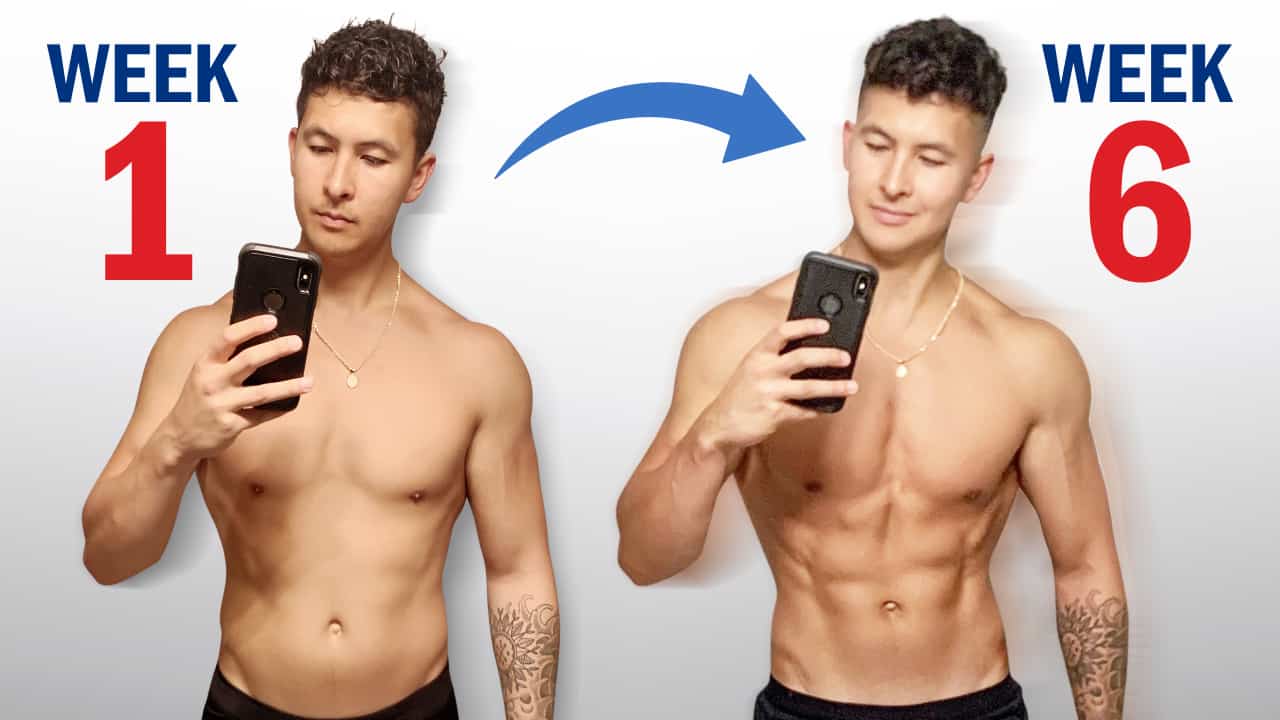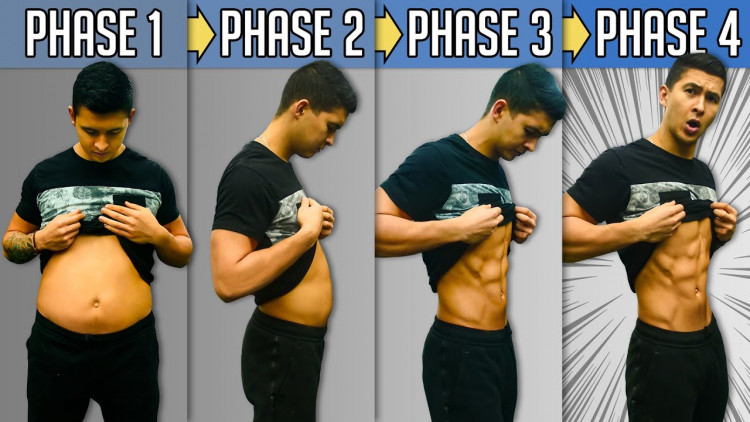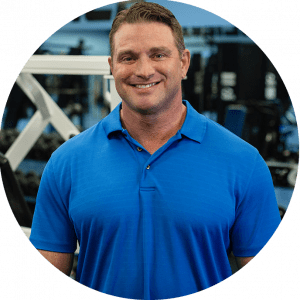
Cutting for four weeks will generally produce some benefits. Generally, however, it takes at least two months to see meaningful results. Most bodybuilders will typically cut for three to four months. You can cut for longer if you wish as long as you take care to do so in a healthy way. Just be aware that after four months, the returns are likely to diminish.
What is a cutting diet?
A cutting diet is a diet aimed at losing fat while preserving muscle mass. If you cut properly, you will keep the muscle you gained when bulking. You are, however, very unlikely to gain more. If you feel you still need to bulk up, then focus on bulking and accept that this could mean adding some fat.
How long should you cut for?
Unfortunately, there’s no one-size-fits-all answer to the question “how long should you cut for?”. There are, however, three guiding factors that can point you towards the right answer for you. These are your starting point, your end goal, and your body fat percentage.
You need to measure your starting point and your end goal in the same terms. For example, if your end goal is to reach a certain weight, then your starting point is your current weight. If your end goal is to reach a certain size, then your starting point is your current size and so on. Your body fat percentage may be a goal. Even if it isn’t, you need to know it.
The reason you need to know your body fat percentage is because it determines how fast you can cut if you wish. If you have a relatively high body fat percentage, you may be able to cut a bit harder if you wish. If, however, your body fat percentage is average then you should generally be aiming to cut 0.5-1% of your body weight per week.
Once you know these factors, you’ll be able to determine the minimum length of time you’ll need for your cut. You’ll also have a good idea of the maximum length of time it will usually take to achieve the results you want. You can then decide how hard you want to push yourself.

How long should a cut last for?
How hard you push your cut should really be determined by your comfort level. You will only find this out when you try it (and it may change over time). If you’re new to cutting, therefore, it’s best to allow yourself a week for each 0.5%. You can then try pushing the pace harder if you want to, knowing you can drop back if necessary.
You might also want to consider loading your cut, usually towards the start. For example, you could aim to lose 1% per week for four weeks and then drop to 0.5% per week. You can also weigh it towards the end. This should, however, only be done because you want to, not because you’re in a last-minute rush.
If you’re new to cutting, then it’s highly advisable to set goals at the lower end of the scale. Cutting is more of a challenge than bulking. If you push it too hard, then, at best, you’ll make yourself miserable. At worst, you’ll store up mental and physical trouble for yourself. If you push your cut too hard you may experience:
Hangriness
Difficulty sleeping
Muscle loss
Decreased bone density
Decreased testosterone
Start with a cutting plan
Even the most experienced bodybuilders can find cutting mentally and physically challenging. It’s vital to approach it mindfully. That starts with having a cutting plan. Researching and creating your cutting plan will go a long way to determining how long you should cut for.
Your starting point is your maintenance calorie level. Figuring this out can actually be one of the most challenging parts of your cut. You may find online calculators helpful. Alternatively, you may just find them confusing. Feel free to ignore them if they don’t work for you. Even if they do, you’re probably going to have to do some experimenting to figure it out properly.
Once you know how many calories it takes to keep your body ticking over, you can start figuring out how many calories you need to cut to achieve your goals. Generally, losing 0.5% to 1% of your body weight each week translates to a calorie deficit of 300-500 calories per week.
Remember, this is compared to the number of calories you would usually consume for your level of activity. Since you are going to be continuing with weightlifting training, you need to ensure you consume enough calories for that.

Calories and macros
Working out how many calories you can cut is your starting point. You then need to work out how you’re going to divide these calories between the different food groups. Your starting point is protein. There are two reasons for this.
Firstly, protein is essential for maintaining the muscle you gained when you bulked. Secondly, it helps you to feel full. For both those reasons, bodybuilders tend to aim for 1 to 1.5g of protein per day per pound of body weight. If this takes up a lot of your calorie allowance, try looking at protein shakes and making them with skimmed milk or even water.
Your second priority is fat. Generally, you will want to get 15%-30% of your daily calorie intake from fats (healthier ones). The rest of your calories will come from (complex) carbohydrates.
As long as you stick to healthy foods, you’ll be able to get sufficient vitamins and minerals while on a cut. In fact, part of the reason why fat is important is that it helps to absorb micronutrients.
Adjusting your plan
Make a commitment to review your cutting plan at the end of each week. Don’t just track your progress, think about what is and isn’t working for you. Then adjust your plan as necessary. If any major disruptions happen (e.g. you get sick), adjust your plan as soon as possible.
How to succeed at cutting
Your cutting plan only has real-world value if you actually stick to it. This is almost certainly going to be a challenge for you. In fact, cutting often feels significantly harder than bulking. Fortunately, cutting can be made a whole lot easier with the right approach. Here are five important tips to help.
Focus on hydration
Water really does fill you up. It therefore really can help to reduce hunger pangs without adding to your calorie intake.

Have a meal plan
Think realistically not just about what you need to eat but about when and how you eat. For example, if you train before work, then you’ll probably want a protein shake afterward. How will this fit in with your breakfast? Will you need snacks to pep you up between meals? Can you realistically eat at a table with cutlery or do you need food to eat on the go?
Having a clear idea of what you need/want to eat and when, gives you the chance to prepare food in advance. This is useful for anyone who’s busy. It’s particularly useful when you’re cutting because you’re probably going to be very eager to eat as soon as it comes time.
Cook at home (or be very careful where you source food)
In the context of cutting, the main reason for preparing your food at home is that you know exactly what goes into it. The fact that it can also help to save you money is just a pleasant bonus. If you’re not up to preparing everything from scratch, then be very careful where you source your foot. You might be unpleasantly surprised just how much fat (and salt) can go into ready-made foods.
Refeed and cardio
Even if you’re pushing your cut, allow yourself one day a week where you consume more calories and burn them off with cardio. Ideally, make those extra calories protein so they’re still contributing to your cut. If you’re doing a slower cut, then you might have two days a week.
Meditate
This is a serious tip. Cutting is hard work. Mental strength does count for a lot. The more balanced you can stay mentally, the easier you are likely to find it to keep your eyes on the prize.
Meditation can do a lot for your mental balance, clarity, and general wellness. It could therefore be very much worth trying. If you’re not convinced, then perhaps try it as an activity on your rest days and see how it goes.
In short
If you plan out and implement your cut properly, you will probably be able to achieve your goals in two to four months. Allowing yourself a bit more time than you think you will need can make cutting easier to handle.
Slowing your cut also makes it possible for you to push yourself a bit harder during training. This means you could actually gain some muscle while cutting instead of just preserving what you already have.













